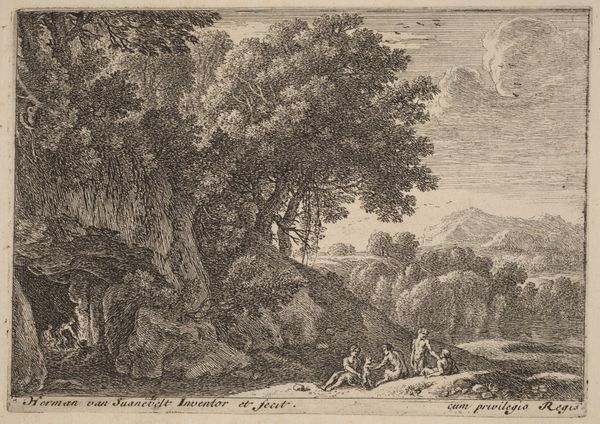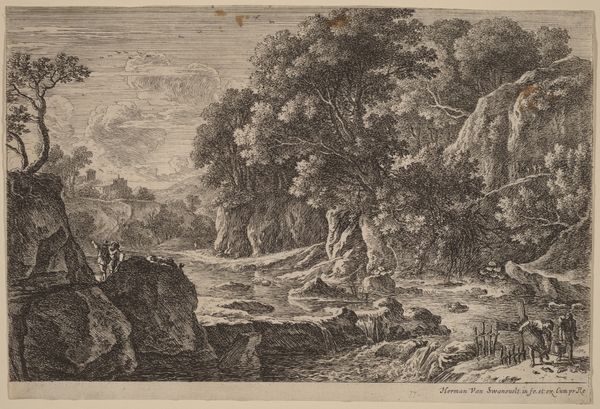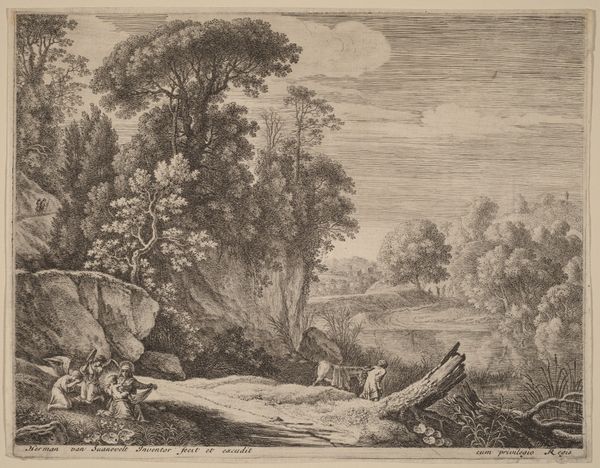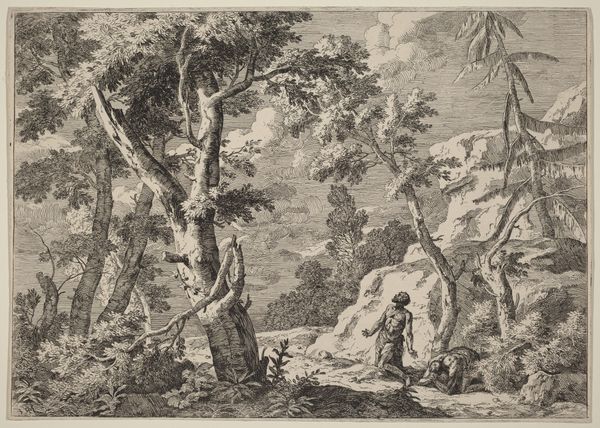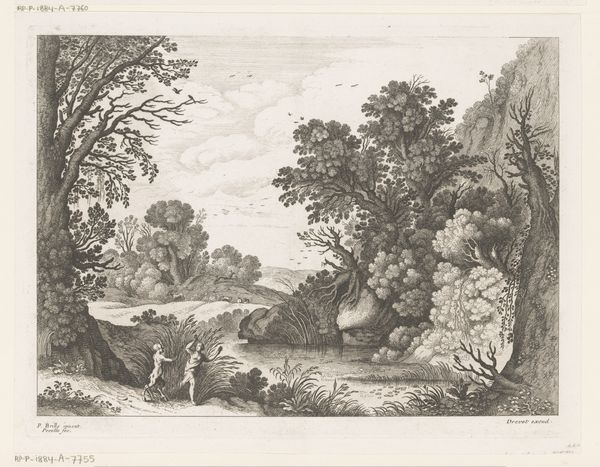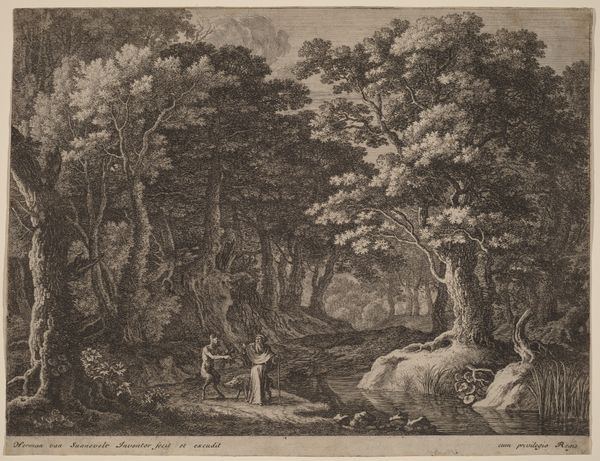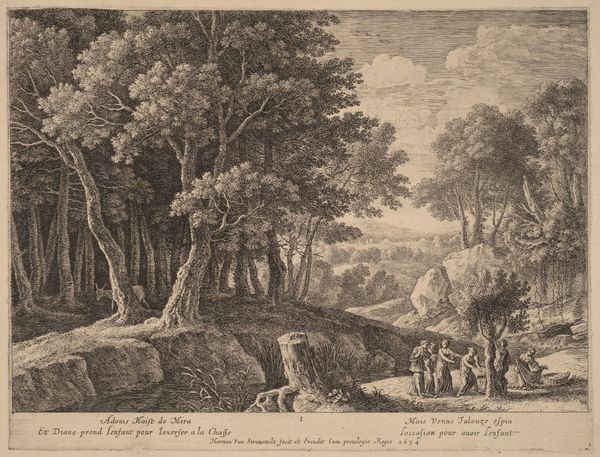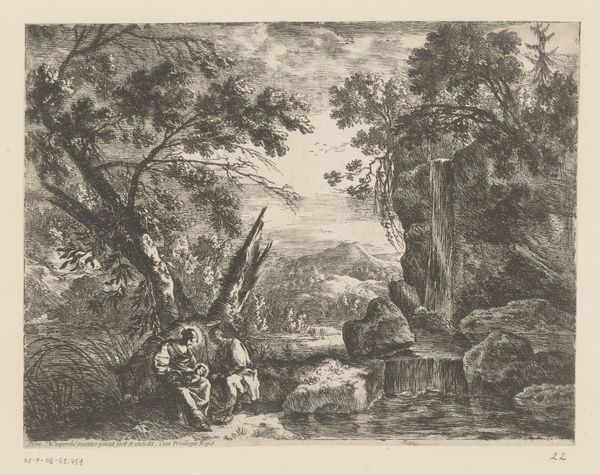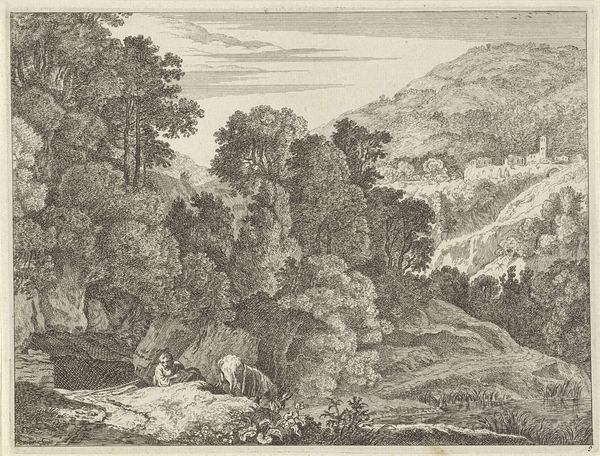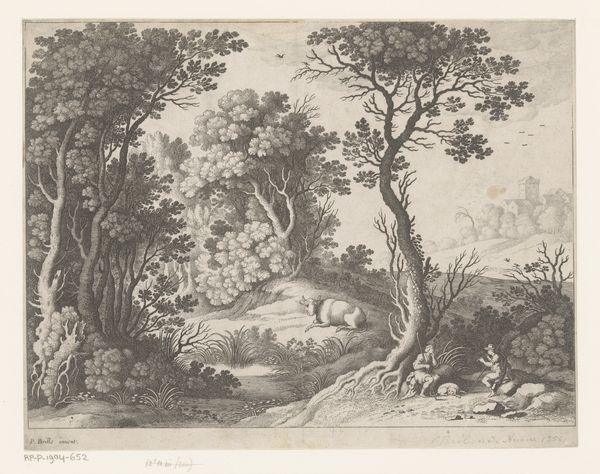
print, etching, engraving
#
narrative-art
#
baroque
# print
#
etching
#
landscape
#
figuration
#
engraving
Copyright: National Gallery of Art: CC0 1.0
Editor: This is Herman van Swanevelt’s etching, "A Dancing Satyr." It depicts a lush landscape with figures dispersed throughout. There’s a sort of pastoral leisure combined with something wild and untamed. What strikes you about it? Curator: It is really intriguing to think about this idyllic scene in its historical context. Consider the power dynamics at play: who gets to enjoy leisure in a landscape, and whose labor makes that possible? What stories are elided when we focus solely on the satyr's dance? Editor: So, it’s not just a carefree scene? Curator: The presence of the satyr itself is worth unpacking. These mythological creatures often embody masculine desire and freedom from social constraints, yet, within a patriarchal society, representations of female bodies are far more common as objects of desire. Why this exception? Editor: Is Swanevelt then perhaps subverting expectations, challenging the conventional male gaze through the satyr figure? Curator: Perhaps. And what about the figures in the bottom left? Are they an audience, participants, or something else entirely? Consider how landscape art often served to legitimize power, to stake claims on territory, both real and imagined. Who is being centered in this idyllic depiction? Editor: That makes me rethink the whole scene. It's much more complex than I initially thought! Thanks for drawing my attention to the social context. Curator: Absolutely! Examining art through an intersectional lens helps us see beyond the surface, prompting critical conversations about power, representation, and the stories we tell ourselves.
Comments
No comments
Be the first to comment and join the conversation on the ultimate creative platform.
